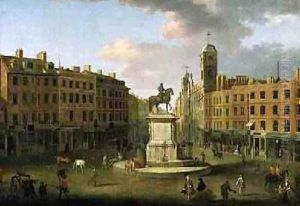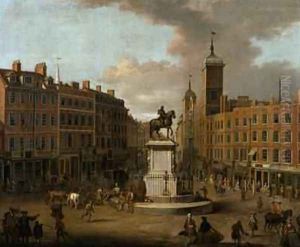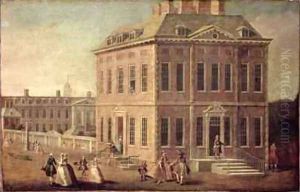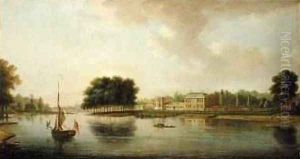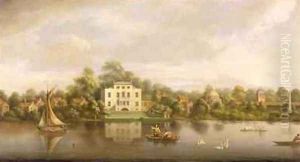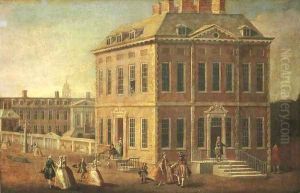Joseph Nickolls Paintings
Joseph Nickolls is an artist whose life details, including the dates of his birth and death, are not widely documented in the accessible historical records. Despite the scarcity of personal information, Nickolls is known for his contributions to the art world, primarily in the realm of painting. His work primarily falls into the category of 18th-century British art, a period that was rich in both cultural and artistic evolution in Britain.
Joseph Nickolls’ artistic output is generally associated with landscape and genre scenes, capturing the essence of English life and its countryside with a particular focus on the aesthetic and sentimental values of his time. His style aligns with the broader trends of the 18th century, which often emphasized detailed observation of nature, pastoral themes, and an interest in capturing the nuances of light and atmosphere. Although not as widely recognized as some of his contemporaries, Nickolls contributed to the visual documentation of his era's social and natural landscapes.
The specifics of Nickolls' training and career path remain largely unchronicled in major art historical texts, which is not uncommon for artists of his period outside the most celebrated circles. However, the existence of his works in collections and the occasional appearance at auctions suggest that he achieved a degree of success and recognition within his lifetime. His paintings, which occasionally surface in art galleries and auctions, provide a glimpse into the artist's skill and thematic preferences, offering valuable insights into the lesser-documented aspects of 18th-century British art.
Without detailed records of his life, Joseph Nickolls remains an intriguing figure, primarily known through his artistic legacy rather than a well-documented biography. His works continue to be of interest to collectors and historians who seek to understand the full spectrum of artistic expression during his time. The mystery surrounding his life adds an element of intrigue to his paintings, inviting speculation about the man behind the canvas and his perspective on the world he portrayed.
